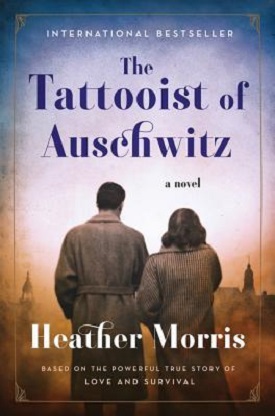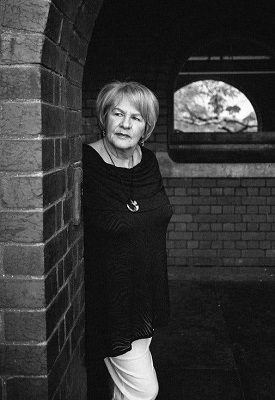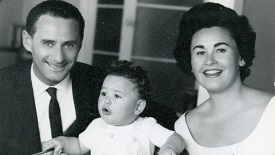 Synopsis:
Synopsis:
It is April 1942, and Lale Sokolov, a Slovakian Jew, responds to the German demand that each Jewish family hand over a child aged eighteen or older to work for the German government so that his older, married brother can remain with his wife and two young children. He has no idea he will be transported to the concentration camps at Auschwitz-Birkenau and become prisoner number 32407.
When his captors discover that he speaks five languages, he is put to work as the Tätowierer (German for tattooist) — required to permanently mark his fellow prisoners. While imprisoned for more than two and a half years, Lale ultimately tattoos the arms of thousands of prisoners with what would become and remain one of the most powerful symbols of the Holocaust.
In Auschwitz, Lale witnesses unspeakable atrocities, as well as surprising acts of bravery and compassion. He risks his life, using his privileged position to exchange jewels and money taken from murdered Jews for food, in order to keep his fellow prisoners alive.
One day in July 1942, Lale comforts a trembling young woman, Gita, who is waiting in line to have 34902 tattooed on her arm. Lale vows that he and Gita will both survive . . . and marry.
The Tattooist of Auschwitz is the debut novel from author Heather Morris, a retired social worker. The book is a vivid, harrowing recreation of Lale’s experiences. But it is also a testament to the endurance of love and humanity in the darkest, most unimaginable circumstances. Morris stesses, “They’re Lale’s memories, they’re his stories. This is not the story of the Holocaust. It is a Holocaust story.”
Review:

Author Heather Morris learned from a friend that Lale Sokolov had just lost his wife of 60 years and wanted to tell a story to someone. He specified only that his listener not be Jewish — to ensure that his/her own emotional baggage or familial connection to the Holocaust would not alter the fundamental truth of his story. At that point, Morris had only been “dabbling in writing, and liked stories based on real people.” She agreed to meet him. A week later, she and Lale, then 87 years old, embarked upon what would become a three-year journey of conversations and friendship until Lale’s death in 2006. She began writing The Tattooist of Aucshwitz after Lale’s death.
The book is a fictionalized, powerful account, set during a period of history that must never be forgotten. As the story opens, Lale is a dapper twenty-five-year-old ladies’ man who has been raised by his mother and sister to dote on and respect women. He enjoys female companion, but has not yet found the woman with whom he wants to spend his life.
As the transport proceeds, he is shocked at the manner in which he and the other men on the train are treated, realizing that his life will never be the same, a reality that is reinforced when a piece of paper bearing a number — 32407 — is thrust into his hand. “An SS officer pulls off Lale’s jacket, rips his shirtsleeve, and pushes his left forearm flat on the table. He stares in disbelief as the numbers 32407 are stabbed into his skin, one after the other. The piece of wood with a needle embedded in it moves quickly and painfully. . . . The tattooing has taken only seconds, but Lale’s shock makes time stand still. He grasps his arm, staring at the number. How can someone do this to another human being? He wonders if for the rest of his life, be it short or long, he will be defined by this moment, this irregular number: 32407.” But Lale resolves to survive. “I will live to leave this place. I will walk out a free man. If there is a hell, I will see these murderers burn in it.”
To save one is to save the world. ~~ Lale Sokolov
Lale’s horror is magnified when he is recruited to assist Pepan, the camp’s Tätowierer, who assures Lale that he can help Lale survive. “You want me to tattoo other men? I don’t think I could do that. Scar someone, hurt someone . . .” Papan convinces Lale by reminding him that if he doesn’t take the job, “someone will who has less soul than you do, and he will hurt these people more.” Lale commits to performing the job in the most compassionate way possible, given the circumstances.
Morris relates the various ways in which Lale risked his life to help others, and did indeed survive confinement in a place where hope was in short order most of the time. At night he fell asleep listening to Hebrew chants from those around him who still clung to their faith. By some, he was branded a “collaborator” with the enemy, but he used his ingenuity and courage to take advantage of opportunities to save as many others as possible, including the beautiful young Gita with whom he instantly falls in love. She refuses to tell him about her past, her family, where she came from, or even her last name. For Gita it is too painful and she wants to forget for a little while, escaping reality for just a few moments when she is with Lale. She promises to tell him on the day they leave Auschwitz, but insists they “have no future.” Lale refuses to give up, telling her about his vow to survive. “We will survive and make a life where we are free to kiss when we want to, make love when we want to.”
At its core, The Tattooist of Auschwitz is a love story. Lale’s story illustrates the power of love to provide comfort and distraction through dreams of and plans for the future; inspire selfless and risky action; and sustain and inspire during the darkest hours when it appears that hope is only folly for the naive or unenlightened.
Remaining steadfastly committed to his vow is a challenge for Lale, of course. At times he feels nothing but despair, wondering how he is even “still breathing, when so many aren’t? . . . The twinkling of lights overhead is no longer a comfort. They merely remind him of the chasm between what life can be and what it is now. . . . He used to feel comforted by the heavenly roof of the night sky. Somewhere, my family is looking at the same stars now and wondering where I am. I hope they can get more comfort from them than I can.” Still, Lale falls into an existence that is comfortable as compared to so many others because, as the Tätowierer, he works with a handful of other prisoners and is removed from the most inhumane conditions to which others are subjected. About that, he feels guilt, especially when he sees others die before his eyes or be brutally herded onto trucks with the knowledge that he will never see them again. Like Lale, Gita is painfully aware of the number of people who have passed through the camps because she works in the office processing paperwork. In fact, she knows more about their lives than Lale. “She knows their names and ages, and he realizes that this knowledge will forever haunt her.”

Lale did, in fact, find Gita after the liberation of the camps, and they married in October 1945. Eventually, they settled in Australia where they raised their son, Gary. He recalls growing up in a house “full of love and affection, especially for me,” in which his parents’ devotion “to each other was total and uncompromising.” Even when the family faced hard times, Gita taught Gary, “As long as we are alive and healthy, everything will work out for the best.” He never saw his father, Lale, cry, until his mother died. Lale had seen “death on such a grand scale for so many years” that he was rendered “unable to weep.” Except for his beloved Gita.
In the camp, Gita presciently told Lale that someday he would honor all of those lost “by staying alive, surviving this place and telling the world what happened here.” And he did. When Lale met Morris in 2003, he told her that he needed her to work quickly because he didn’t have much time. “I need to be with Gita,” he said. It was her death that inspired him to finally tell his story. “He wanted it to be recorded so, in his words, ‘it would never happen again.'”
The Tattooist of Auschwitz is difficult to read because of the subject matter, as well as the knowledge that it is largely based upon the actual experiences and observations of Lale, an ordinary man who, like so many others, was thrust into extraordinary and fathomable circumstances and events. Morris relates Lale’s story in a straight-forward, unrelenting manner, detailing how he was stripped of his very identity — and assigned a number — along with his freedom, dignity, and possessions, and separated from his beloved family, most of whom he never saw again. His story is gut-wrenching, appalling, and haunting. Morris details, sans judgment, the things Lale did to survive, challenging readers to question what choices they might make. Had Lale attempted to resist the offer to become the Tätowierer, he would most likely have been executed. Did he opt to collaborate with the Nazis? Or did he cleverly parlay his position into a way to survive, as well as help others? Which course of action would have been the more honorable? Under such circumstances, does honor even matter? Those questions, and so many others, should never, of course, have to be contemplated again.
Morris did not visit Auschwitz until 2018. Once there, she stood on the concrete step that led down into Crematoria #3 and apologized, on behalf of Lale, to the 1.5 million people exterminated there. “He wrongly felt it was his fault that he couldn’t save the souls who died there,” Morris recalls. “Lale’s motto in Auschwitz was,’If you wake up in the morning, it is a good day.’ He believed you owed it to yourself and those around you to make the day the best it could be.”
Through Morris, Lale has at last, and for all time, honored all of those who perished by “telling the world what happened” there.
Also by Heather Morris:
Enter to Win a Copy of The Tattooist of Auschwitz
Note: The book may only be mailed to a United States address.





11 Comments
I think my favorite WWII historical book so far is The Alice Network. I would love to read The Tattooist of Auschwitz because at my first job I worked with a Holocaust survivor. She would never talk about it but I think she was the strongest person I have ever met.
Thanks for The Tatooist Giveaway! I love historical fiction especially the WWII era. My favorite book is The Ventriloquists which came out this year and is about a band of unlikely heroes who with the power of words help put the Nazis in their place!
I’ve always been drawn to stories that take place during WWII. I don’t think I could possibly pick a favorite – there are so many!
I love HF and I’ve heard this book is great! Thanks for the chance
I absolutely love historical fiction.
want to read this
Historical fiction and especially historical romance is my favorite genre of book to read!
This historical is heartbreaking, emotional, memorable and courageous. I have read hundreds of Holocaust novels. Being Jewish and knowing about this era is important and vital since many no longer study this.
I’m so glad that Lale and Gita were able to find each other and marry after the liberation of the camps! I’ also grateful that Lale shared his story with the author so that this horrible time in history is not forgotten.
Great review. I loved this book.
I really want to read this book.